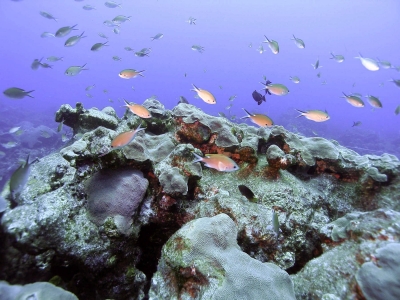Scientists have discovered that in the mid-1990s there was a large reorganization of the flora and fauna in the Gulf of Mexico linked to a shift in oceanic surface temperatures.
 An article in the journal Global Change Biology released this week reports the results of an analysis that looked at over 100 indicators representing physical, biological and economic aspects of the Gulf of Mexico over the last three decades.
An article in the journal Global Change Biology released this week reports the results of an analysis that looked at over 100 indicators representing physical, biological and economic aspects of the Gulf of Mexico over the last three decades.
The scientists, a research team led by the National Oceanic and Atmospheric Administration and including Dr. Bryan Black from the University of Texas Marine Science Institute, found that the large-scale shift was primarily related to climate. The ecosystem shift affected animals throughout the food chain, from plankton to sharks. Coupled with the ecosystem shift were changes in human activities – such as declines in commercial and recreational fishing. Many of the animals responsible for driving the community shift were unmanaged fish populations with short lifespans.
Researchers discovered that the primary cause for the large ecosystem shift was the Atlantic Multidecadal Oscillation (AMO). The AMO is a measure of sea surface temperature in the North Atlantic and is adjusted to remove trends in human-forced warming. The AMO is a big player in determining oceanographic conditions. It has been shown to have an influence on North Atlantic fisheries since the early 1900s, but the AMO has rarely been looked at in the Gulf of Mexico as an influence for fishing trends.
The majority of the change to fisheries and ecosystems caused by the AMO are believed to be a result of its effect on temperature, freshwater inputs and flow of currents through the Gulf of Mexico. The warm phase of the AMO is associated with increases in the ‘Dead Zone’ off the coast of Louisiana and decreases in plankton abundance.
These finding are important because decision-makers involved with Gulf of Mexico fisheries need to consider and understand the larger impact of climate variability.


















Comments